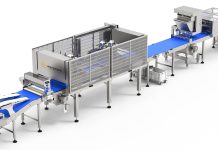Winemaking industry and distilleries generate millions of tons of by-products per year all over the world. Those by-products, even though not intrinsically dangerous, pose serious polluting concerns if directly disposed of in the environment due to their high organic matter content, together with a production concentrated in just few months. That’s why they have to be disposed of in a proper way. Considering all the winemaking solid by-products, marc (referred to also as pomace) generally represents the main fraction (up to 60 % on weight), followed by lees (25 %) and stalks (or stems, 14 %). Since marc and lees can be further processed in the distilleries, looking at an enlarged processing chain including also distillation, distilled marc may represent the absolute final by-product (Spigno, 2015). All the winemaking products can be used instead of being disposed in landfill, which makes correct their identification with by-products rather than wastes. At national (Italian) level, grape stalks are mainly used for agronomic purposes, while marc and lees, for legislative constraints, are generally distilled. However, also distillation is not a remunerative solution for the wineries anymore. In particular, the Council Regulation (EC) No 479/2008on the common organisation of the market in wine, left only the possibility of granting support for the voluntary or compulsory distillation of grape marc, if the alcohol resulting from the supported distillation shall be used exclusively for industrial or energy purposes. In this regard, Italian legislation (DM 7407/2010) has preserved the compulsory distillation of marc introducing also some allowed alternative uses: energetic use, direct and indirect agronomic use, pharmaceutical and cosmetic use and, finally, also agro-food use. In the latter case, however, legislation has specified only some food products: bakery products, cheese and fruit-vegetable products. Grape marc still represents a rich source of antioxidant phenolic compounds, fibre, minerals and oil (from the seeds component). That’s why both direct food use as “flours” and indirect food use through the production of concentrated phenolic extracts or seed oil, appears an interesting valorisation option (Lavelli et al., 2016). Also sugar and protein fractions could be recovered from grape stalks and lees and be employed in the food sector.
A reintroduction into the food chain of the by-products could be also realised into the same originating grape processing chain, as natural fertilisers or pesticides into the vineyard, or even into the wine-making process, but legislative constrains still prevents the last application. Last, but not least, it is not conceivable that all the winemaking products may be valorised to enter back into the food chain. A careful analysis has to be carried out that takes into consideration the qualitative requisites of the by-products for their direct/indirect food uses, together with the marketing potentials. The final result should be an integral exploitation strategy that develops valorisation processes for the recovery of high added-value compounds, together with “basic” recycling which could provide energy to the new developed lines and send back nutritive elements to the soil. These are the themes that this Symposium wanted to present and discuss also with reference to the EXPO2015 subject and the project “Experiences of rice and wine in the region of Longobardi and Visconti” funded by the G.A.L. Fondazione per lo Sviluppo dell’Oltrepò Pavese that funded also this Symposium. EXPO2015, was, in fact, cantered on nutrition – food waste – agriculture. The recovery of fibre, polyphenols and minerals from oenological by-products for the food sector has the objective of exploiting low-cost resources for the production of added-value fractions which, otherwise, would pollute the environment. If recovered, those fractions can be used to improve the nutritional profile of some food products, for example increasing their content in fibre and antioxidants, or substituting chemical preservatives and additives. On the other hand, the project “Experiences of rice and wine in the region of Longobardi and Visconti” was aimed to the valorisation of the region as a place of gastronomy excellences linked to the wine chain and to a sustainable and innovative management of the land. For the symposium were, then, also organised some laboratory activities consisting in sensory testing of local cheese and biscuits enriched with flours and extracts from grape marc and paired with local wines. The symposium was organised with the invitation of researchers working on the above cited topics to present their results and point of views on the ValorVitis project (a research project focused on the valorisation of oenological by-products for the recovery of high added- value compounds which I coordinated and which inspired me for the organisation of the symposium) and on important aspects related to the industrial implementation of such valorisation strategies as well as on the enological potential of winemaking by-products. A contributions call was launched and some additional international speakers were selected based on their research activities in the field.
References
Spigno G., 2015, Recupero ed utilizzazione dei sottoprodotti enologici. In: (a cura di): A. Palliotti, S. Poni, O. Silvestroni, La nuova viticoltura. p. 393-404, BOLOGNA: Edagricole, ISBN: 9788850654536
Lavelli V., Torri L., Zeppa G., Fiori L., Spigno G. (2016). Recovery of winemaking by-products for innovative food applications – a review. Italian Journal of Food Science, DOI: 10.14674/1120-1770/ijfs.v507
By G. Spigno*
*Scientific Organizer- Università Cattolica del Sacro Cuore, Istituto di Enologia e Ingegneria Agro-Alimentare, Piacenza, Italy giorgia.spigno@unicatt.it





